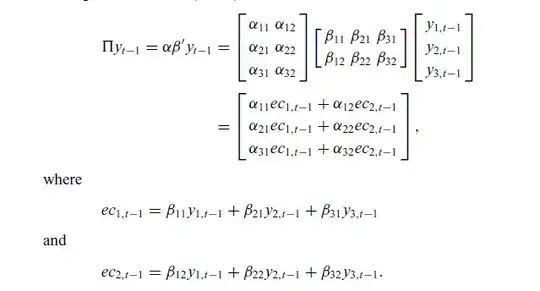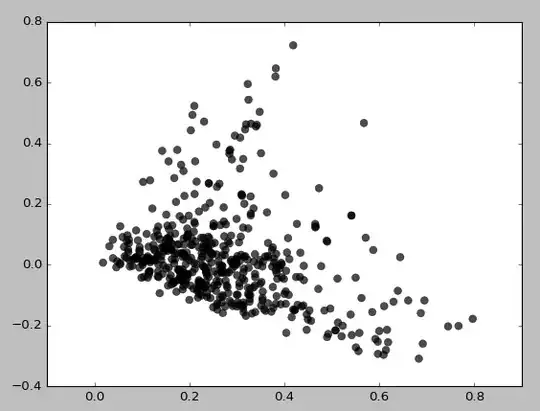Intro
Let us start with some notation: We have $m$ simple hypotheses we test, with each null numbered $H_{0,i}$. The global null hypothesis can be written as an intersection of all the local nulls: $H_0=\bigcap_{i=1}^{m}{H_{0,i}}$. Next, we assume that each hypothesis $H_{0,i}$ has a test statistic $t_i$ for which we can compute the p-value $p_i$. More specifically, we assume that for each $i$ the distribution of $p_i$ under $H_{0,i}$ is $U[0,1]$.
For example (Chapter 3 of Efron), consider a comparison of 6033 genes in two groups: For each gene in $1\le i\le 6033$, we have $H_{0,i}:$ "no difference in the $i^{th}$ gene" and $H_{1,i}:$ "there is a difference in the $i^{th}$ gene". In this problem, $m=6033$. Our $m$ hypotheses can be divided into 4 groups:
| $H_{0,i}$ |
Accepted |
Rejected |
Sum |
| Correct |
$U$ |
$V$ |
$m_0$ |
| Incorrect |
$T$ |
$S$ |
$m-m_0$ |
| Sum |
$m-R$ |
$R$ |
$m$ |
We do not observe $S,T,U,V$ but we do observe $R$.
FWER
A classic criterion is the familywise error, denoted $FWE=I\{V\ge1\}$. The familywise error rate is then $FWER=E[I\{V\ge1\}]=P(V\ge1)$. A comparison method controls the level-$\alpha$ $FWER$ in the strong sense if $FWER\le\alpha$ for any combination $\tilde{H}\in\left\{H_{0,i},H_{1,i}\right\}_{i=1,...,m}$; It controls the level-$\alpha$ $FWER$ in the weak sense if $FWER\le\alpha$ under the global null.
Example - Holm's method:
- Order the p-values $p_{(1)},...,p_{(m)}$ and then respectively the hypotheses $H_{0,(1)},...,H_{0,(m)}$.
- One after the other, we check the hypotheses:
- If $p_{(1)}\le\frac{\alpha}{m}$ we reject $H_{0,(1)}$ and continue, otherwise we stop.
- If $p_{(2)}\le\frac{\alpha}{m-1}$ we reject $H_{0,(2)}$ and continue, otherwise we stop.
- We keep rejecting $H_{0,(i)}$ if $p_{(i)}\le\frac{\alpha}{m-i+1}$
- We stop the first time we get $p_{(i)}>\frac{\alpha}{m-i+1}$ and then reject $H_{0,(1)},...,H_{0,(i-1)}$.
Holm's method example: we've simulated $m=20$ p-values, then ordered them. Red circles indicate rejected hypotheses, green circles were not rejected, the blue line is the criterion $\frac{\alpha}{m-i+1}$:

The hypotheses rejected were $H_{0,(1)},H_{0,(2)},H_{0,(3)}$. You can see that $p_{(4)}$ is the smallest p-value larger than the criterion, so we reject all hypotheses with smaller p-values.
It is quite easy to prove that this method controls level-$\alpha$ $FWER$ in the strong sense. A counterexample would be the Simes method, which only controls the level-$\alpha$ $FWER$ in the weak sense.
FDR
The false discovery proportion (
$FDP$) is a softer criterion than the
$FWE$, and is defined as
$FDP=\frac{V}{\max\{1,R\}}=\left\{\begin{matrix} \frac{V}{R} & R\ge1\\ 0 & o.w\end{matrix}\right.$. The false discovery rate is
$FDR=E[FDP]$. Controlling level-
$\alpha$ $FDR$ means that The false if we repeat the experiment and rejection criteria many times,
$FDR=E[FDP]\le\alpha$.
It is very easy to prove that $FWER\ge FDR$: We start by claiming $I\{V\ge1\}\ge\left\{\begin{matrix} \frac{V}{R} & R\ge1\\ 0 & o.w\end{matrix}\right.$.
If $V=0$ then $I\{V\ge1\}=0=\left\{\begin{matrix} \frac{V}{R} & R\ge1\\ 0 & o.w\end{matrix}\right.$. In the above table, $R\ge V$ so for $V>0$ we get $\frac{V}{\max\{1,R\}}\le1$ and $I\{V\ge1\}\ge\frac{V}{\max\{1,R\}}$. This also means $E\left[I\{V\ge1\}\right]\ge E\left[\frac{V}{\max\{1,R\}}\right]$, which is exactly $FWER\ge FDR$.
Another very easy claim if that controlling level-$\alpha$ $FDR$ implies controlling level-$\alpha$ $FWER$ in the weak sense, meaning that under the global $H_0$ we get $FWER=FDR$: Under the global $H_0$ every rejection is a false rejection, meaning $V=R$, so $$FDP=\left\{\begin{matrix} \frac{V}{R} & R\ge1\\ 0 & o.w\end{matrix}\right.=\left\{\begin{matrix} \frac{V}{V} & V\ge1\\ 0 & o.w\end{matrix}\right.=\left\{\begin{matrix} 1 & V\ge1\\ 0 & o.w\end{matrix}\right.=I\{V\ge1\}$$ and then $$FDR=E[FDP]=E[I\{V\ge1\}]=P(V\ge1)=FWER.$$
B-H
The Benjamini-Hochberg method is as follows:
- Order the p-values $p_{(1)},...,p_{(m)}$ and then respectively the hypotheses $H_{0,(1)},...,H_{0,(m)}$
- Mark as $i_0$ the largest $i$ for which $p_{(i)}\le \frac{i}{m}\alpha$
- Reject $H_{0,(1)},...,H_{0,(i_0)}$
Contrary to the previous claims, it is not trivial to show why the BH method keeps $FDR\le\alpha$ (to be more precise, it keeps $FDR=\frac{m_0}{m}\alpha$). It isn't a short proof either, ,his is some advanced statistical courses material (I've seen it in one of my Master of Statistics courses). I do think that for the extent of this question, we can simply assume it controls the FDR.
BH example: again we've simulated $m=20$ p-values, then ordered them. Red circles indicate rejected hypotheses, green circles were not rejected, the blue line is the criterion $\frac{i\cdot\alpha}{m}$:

The hypotheses rejected were $H_{0,(1)}$ to $H_{0,(10)}$. You can see that $p_{(11)}$ is the largest p-value larger than the criterion, so we reject all hypotheses with smaller p-values - even though some of them ($p_{(6)},p_{(7)}$) are larger than the criterion. Compare this (largest p-value larger than the criterion) and Holm's method (smallest p-value larger than the criterion).
Proving $FDR\le\alpha$ for BH
For $m_0=0$ (which means each $p_i$ is distributed under $H_{1,i}$) we get $FDR\le\alpha$ because $V=0$, so assume $m_0\ge1$. Denote $V_i=I\{H_{0,i}\text{ was rejected}\}$ and $\mathcal{H}_0\subseteq\{1,...,m\}$ the set of hypotheses for which $H_{0,i}$ is correct, so $FDP=\sum_{i\in\mathcal{H}_0}{\frac{V_i}{\max\{1,R\}}}=\sum_{i\in\mathcal{H}_0}{X_i}$. We start by proving that for $i\in\mathcal{H}_0$ we get $E[X_i]=\frac{\alpha}{m}$:
$$X_i=\sum_{k=0}^{m}{\frac{V_i}{\max\{1,R\}}I\{R=k\}}=\sum_{k=1}^{m}{\frac{I\{H_{0,i}\text{ was rejected}\}}{k}I\{R=k\}}=\sum_{k=1}^{m}{\frac{I\left\{ p_i\le\frac{k}{m}\alpha \right\}}{k}I\{R=k\}}$$
Let $R(p_i)$ the number of rejections we get if $p_i=0$ and the rest of the p-values unchanged. Assume $R=k^*$, if $p_i\le\frac{k^*}{m}\alpha$ then $R=R(p_i)=k^*$ so in this case, $I\left\{ p_i\le\frac{k^*}{m}\alpha \right\}\cdot I\{R=k^*\}=I\left\{ p_i\le\frac{k^*}{m}\alpha \right\}\cdot I\{R(p_i)=k^*\}$.
If $p_i>\frac{k^*}{m}\alpha$ we get $I\left\{ p_i\le\frac{k^*}{m}\alpha \right\}=0$ and again $I\left\{ p_i\le\frac{k^*}{m}\alpha \right\}\cdot I\{R=k^*\}=I\left\{ p_i\le\frac{k^*}{m}\alpha \right\}\cdot I\{R(p_i)=k^*\}$, so overall we can deduce
$$X_i=\sum_{k=1}^{m}{\frac{I\left\{ p_i\le\frac{k}{m}\alpha \right\}}{k}I\{R=k\}}=\sum_{k=1}^{m}{\frac{I\left\{ p_i\le\frac{k}{m}\alpha \right\}}{k}I\{R(p_i)=k\}},$$
and now we can calculate $E[X_i]$ conditional on all p-values except $p_i$. Under this condition, $I\{R(p_i)=k\}$ is deterministic and we overall get:
$$E\left[I\left\{ p_i\le\frac{k}{m}\alpha \right\}\cdot I\{R(p_i)=k\}\middle|p\backslash p_i\right]=E\left[I\left\{ p_i\le\frac{k}{m}\alpha \right\}\middle|p\backslash p_i\right]\cdot I\{R(p_i)=k\}$$
Because $p_i$ is independent of $p\backslash p_i$ we get
$$E\left[I\left\{ p_i\le\frac{k}{m}\alpha \right\}\middle|p\backslash p_i\right]\cdot I\{R(p_i)=k\}=E\left[I\left\{ p_i\le\frac{k}{m}\alpha \right\}\right]\cdot I\{R(p_i)=k\}\\=P\left(p_i\le\frac{k}{m}\alpha\right)\cdot I\{R(p_i)=k\}$$
We assumed before that under $H_{0,i}$, $p_i\sim U[0,1]$ so the last expression can be written as $\frac{k}{m}\alpha\cdot I\{R(p_i)=k\}$. Next,
$$E[X_i|p\backslash p_i]=\sum_{k=1}^m\frac{E\left[I\left\{ p_i\le\frac{k}{m}\alpha \right\}\cdot I\{R(p_i)=k\}\middle|p\backslash p_i\right]}{k}=\sum_{k=1}^m\frac{\frac{k}{m}\alpha\cdot I\{R(p_i)=k\}}{k}\\=\frac{\alpha}{m}\cdot\sum_{k=1}^m{I\{R(p_i)=k\}}=\frac{\alpha}{m}\cdot 1=\frac{\alpha}{m}.$$
Using the law of total expectation we get $E[X_i]=E[E[X_i|p\backslash p_i]]=E\left[\frac{\alpha}{m}\right]=\frac{\alpha}{m}$. We have previously obtained $FDP=\sum_{i\in\mathcal{H}_0}{X_i}$ so
$$FDR=E[FDP]=E\left[\sum_{i\in\mathcal{H}_0}{X_i}\right]=\sum_{i\in\mathcal{H}_0}{E[X_i]}=\sum_{i\in\mathcal{H}_0}{\frac{\alpha}{m}}=\frac{m_0}{m}\alpha\le\alpha\qquad\blacksquare$$
Summary
We've seen the differences between strong and weak sense of $FWER$ as well as the $DFR$. I think that you can now spot yourself the differences and understand why $FDR\le\alpha$ does not imply that $FWER\le\alpha$ in the strong sense.


